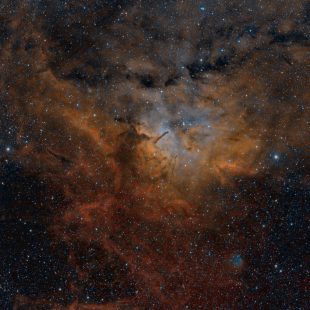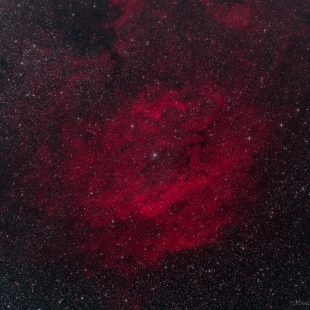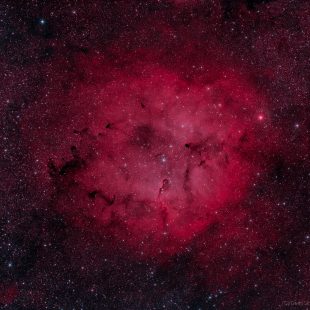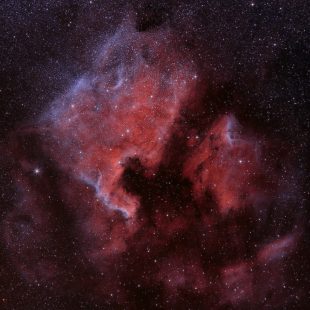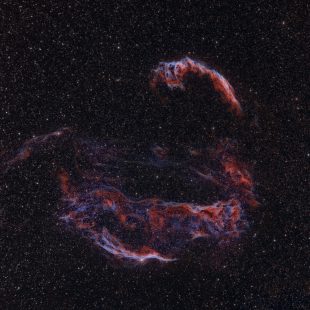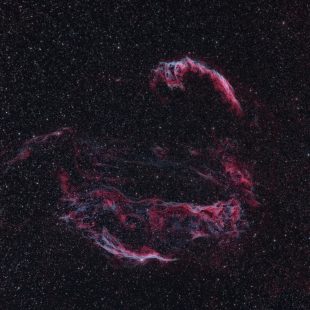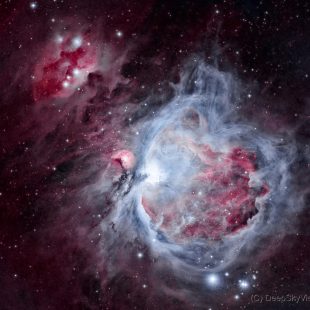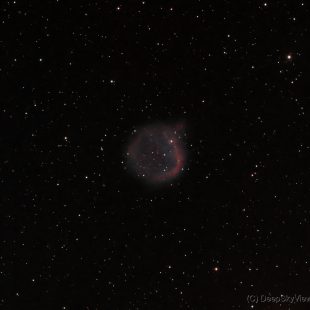Sh2-86
Sharpless 86 (Sh2-86) is a rich and beautiful emission nebula surrounding the open star cluster NGC 6823 plus small reflection nebula NGC 6820 in Vulpecula. The star cluster including 50 to 100 stars was discovered by William Herschel in 1785 and is about 6000 light years away. The remarkable pillar like features that are pointing […]
